Palladium diacetate
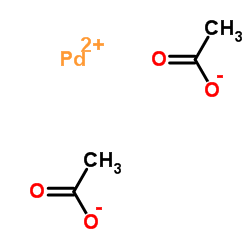
Palladium diacetate structure
|
Common Name | Palladium diacetate | ||
|---|---|---|---|---|
| CAS Number | 3375-31-3 | Molecular Weight | 224.51 | |
| Density | N/A | Boiling Point | 117.1ºC at 760mmHg | |
| Molecular Formula | C4H6O4Pd | Melting Point | 205ºC | |
| MSDS | Chinese USA | Flash Point | 40ºC | |
| Symbol |

GHS05 |
Signal Word | Danger | |
Use of Palladium diacetatePalladium (II) acetate is a biochemical reagent that can be used as a biological material or organic compound for life science related research. |
| Name | Palladium(II) acetate |
|---|---|
| Synonym | More Synonyms |
| Description | Palladium (II) acetate is a biochemical reagent that can be used as a biological material or organic compound for life science related research. |
|---|---|
| Related Catalog | |
| In Vitro | 醋酸钯是一种催化剂。 |
| Boiling Point | 117.1ºC at 760mmHg |
|---|---|
| Melting Point | 205ºC |
| Molecular Formula | C4H6O4Pd |
| Molecular Weight | 224.51 |
| Flash Point | 40ºC |
| Exact Mass | 223.930099 |
| PSA | 80.26000 |
| Storage condition | Store at R.T. |
| Water Solubility | insoluble |
CHEMICAL IDENTIFICATION
HEALTH HAZARD DATAACUTE TOXICITY DATA
|
| Symbol |

GHS05 |
|---|---|
| Signal Word | Danger |
| Hazard Statements | H318 |
| Precautionary Statements | P280-P305 + P351 + P338 + P310 |
| Personal Protective Equipment | dust mask type N95 (US);Eyeshields;Gloves |
| Hazard Codes | Xi:Irritant; |
| Risk Phrases | R41 |
| Safety Phrases | S26-S39 |
| RIDADR | NONH for all modes of transport |
| WGK Germany | 2 |
| RTECS | AJ1900000 |
| HS Code | 28439090 |
| Precursor 3 | |
|---|---|
| DownStream 10 | |
| HS Code | 2915299090 |
|---|---|
| Summary | 2915299090 salts of acetic acid。supervision conditions:AB(certificate of inspection for goods inward,certificate of inspection for goods outward)。VAT:17.0%。tax rebate rate:9.0%。MFN tariff:5.5%。general tariff:50.0% |
|
A sulfoxide-promoted, catalytic method for the regioselective synthesis of allylic acetates from monosubstituted olefins via C-H oxidation.
J. Am. Chem. Soc. 126 , 1346, (2004) Sulfoxide ligation to Pd(II) salts is shown to selectively promote C-H oxidation versus Wacker oxidation chemistry and to control the regioselectivity in the C-H oxidation products. A catalytic method... |
|
|
Efficient access to cyclic ureas via Pd-catalyzed cyclization.
Org. Lett. 8 , 3311, (2006) [Structure: see text] An efficient regioselective method for the preparation of structurally diverse imidazopyridinones and benzoimidazolones starting from readily available and economical starting ma... |
|
|
Palladium(II) acetate in pyridine as an effective catalyst for highly regioselective hydroselenation of alkynes.
J. Org. Chem. 70 , 696, (2005) A highly regioselective hydroselenation of terminal alkynes with benzeneselenol can be achieved by the combination of palladium acetate and pyridine, providing the corresponding terminal alkenes, (i.e... |
| Pd(OAc)2 |
| palladousacetate |
| diacetatopalladium |
| Palladium(2+) diacetate |
| MFCD00012453 |
| Acetic Acid Palladium(II) Salt |
| PaladiumAcetate |
| palladiym acetate |
| Palladium(II) acetate |
| palladium(II)-acetate |
| palladium(II)acetate |
| bisacetylpalladium |
| Acetic acid, palladium(2+) salt (2:1) |
| palladium acetate |
| palladium(II) diacetate |
| Palladium (II) Acetate |
| EINECS 222-164-4 |
| palladium(II) ethanoate |
| Palladium(II)acetat |
| PALLADIUM DIACETATE |
| diacetoxypalladium |
 CAS#:7440-05-3
CAS#:7440-05-3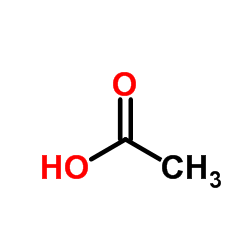 CAS#:64-19-7
CAS#:64-19-7 CAS#:82279-70-7
CAS#:82279-70-7 CAS#:10437-78-2
CAS#:10437-78-2 CAS#:76644-52-5
CAS#:76644-52-5![acetic acid,dicyclohexyl-[2-(1-methyl-3H-indol-3-id-2-yl)phenyl]phosphane,palladium structure](https://image.chemsrc.com/caspic/225/1070731-49-5.png) CAS#:1070731-49-5
CAS#:1070731-49-5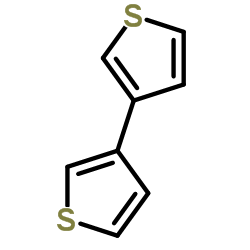 CAS#:3172-56-3
CAS#:3172-56-3 CAS#:2404-89-9
CAS#:2404-89-9 CAS#:492-97-7
CAS#:492-97-7![4-METHYLENE-3,4-DIHYDRO-2H-PYRANO[3,2-B]PYRIDINE structure](https://image.chemsrc.com/caspic/130/405174-46-1.png) CAS#:405174-46-1
CAS#:405174-46-1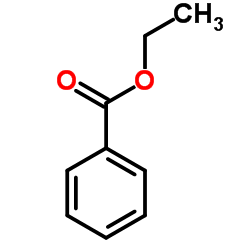 CAS#:93-89-0
CAS#:93-89-0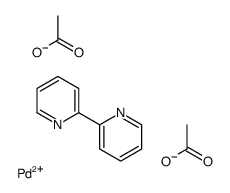 CAS#:14724-41-5
CAS#:14724-41-5 CAS#:20013-73-4
CAS#:20013-73-4
